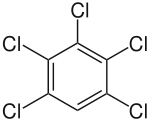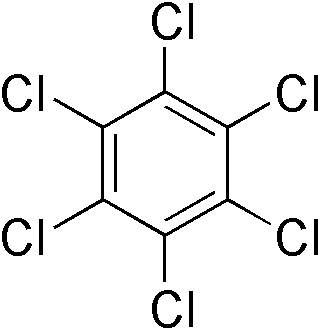

(I) (II)
Figure: Molecular structure of Pentachlorobenzene (I) and Hexachlorobenzene (II)
ALS offering for Pentachlorbenzene testing
|
Matrix |
LOQ |
Sample volume |
|
Soil |
0.01 mg/kg DW |
10 g |
|
Sediment |
0.01 mg/kg DW |
10 g |
|
Water |
0.01 µg/L |
0.5 L |
ALS offering for Hexachlorbenzene testing
|
Matrix |
LOQ |
Sample volume |
|
Soil |
0.005 mg/kg DW |
10 g |
|
Sediment |
0.005 mg/kg DW |
10 g |
|
Water |
0.005 µg/L |
0.5 L |
Overview
Pentachlorobenzene (PeCB)
Pentachlorobenzene (PeCB) has been used globally both as an industrial chemical and as a pesticide. As an industrial chemicals it has been applied as a fire retardant and to reduce viscosity in PCB mixtures to mention but a few. As a pesticide PeCB has been used as a fungicide in the agricultural and forestry industry.
PecB was banned in 2002 and included in under the Stockholm convention in 2009.
Toxicity
PeCB is classed as slightly toxic to humans and very toxic to aquatic organisms.
Overview
Hexachlorobenzene (HCB)
Hexachlorobenzene has been used as a pesticide (fungicide) globally and was first introduced in 1945.
HCB was included in the original “dirty dozen” under the Stockholm convention in 2001 and has been banned in Europe since the 1980’s.
Toxicity
The compound is classed as extremely hazardous to humans and exposure can cause liver disease, affect thyroid, cause loss of hair amongst others. It is alos classed as a probable human cancerogen and an animal cancerogene. HCB is very toxic to aquatic organisms.
Table 11: International threshold values for Pentachlorobenzene
|
Country |
Matrix |
Limit |
|
The Netherlands |
Sediment |
0.1 mg/kg1 |
|
Norway |
Water |
1-10 µg/l2 |
|
The Netherlands |
Water |
0.3 µg/l1 |
|
The Netherlands |
Water |
0.003-1 µg/l3 |
1. Crommentuijn et al., Journal of Environmental Management 58 (2000): 297
2. 2229/2007, Norwegian Pollution Control Authority. Limit depending on classification
3. VROM (2000) Streefwaarden en interventiewaarden bodemsanering. Staatscourant 24 february 2000/39. Limit depending on classification
Table: International threshold values for Hexachlorobenzene
|
Country |
Matrix |
Limit |
|
The Netherlands |
Sediment |
0.005 mg/kg1 |
|
The Netherlands |
Water |
0.009 µg/l1 |
|
The Netherlands |
Water |
0.00009-0.5 µg/l2 |
|
Norway |
Water |
0.013-0.47 µg/l3 |
|
Canada |
Water |
65 µg/l4 |
1. Crommentuijn et al., Journal of Environmental Management 58 (2000): 297
2. VROM (2000) Streefwaarden en interventiewaarden bodemsanering. Staatscourant 24 february 2000/39. Limit depending on classification
3. 2229/2007, Norwegian Pollution Control Authority. Limit depending on classification
4. IVL report B-1354

